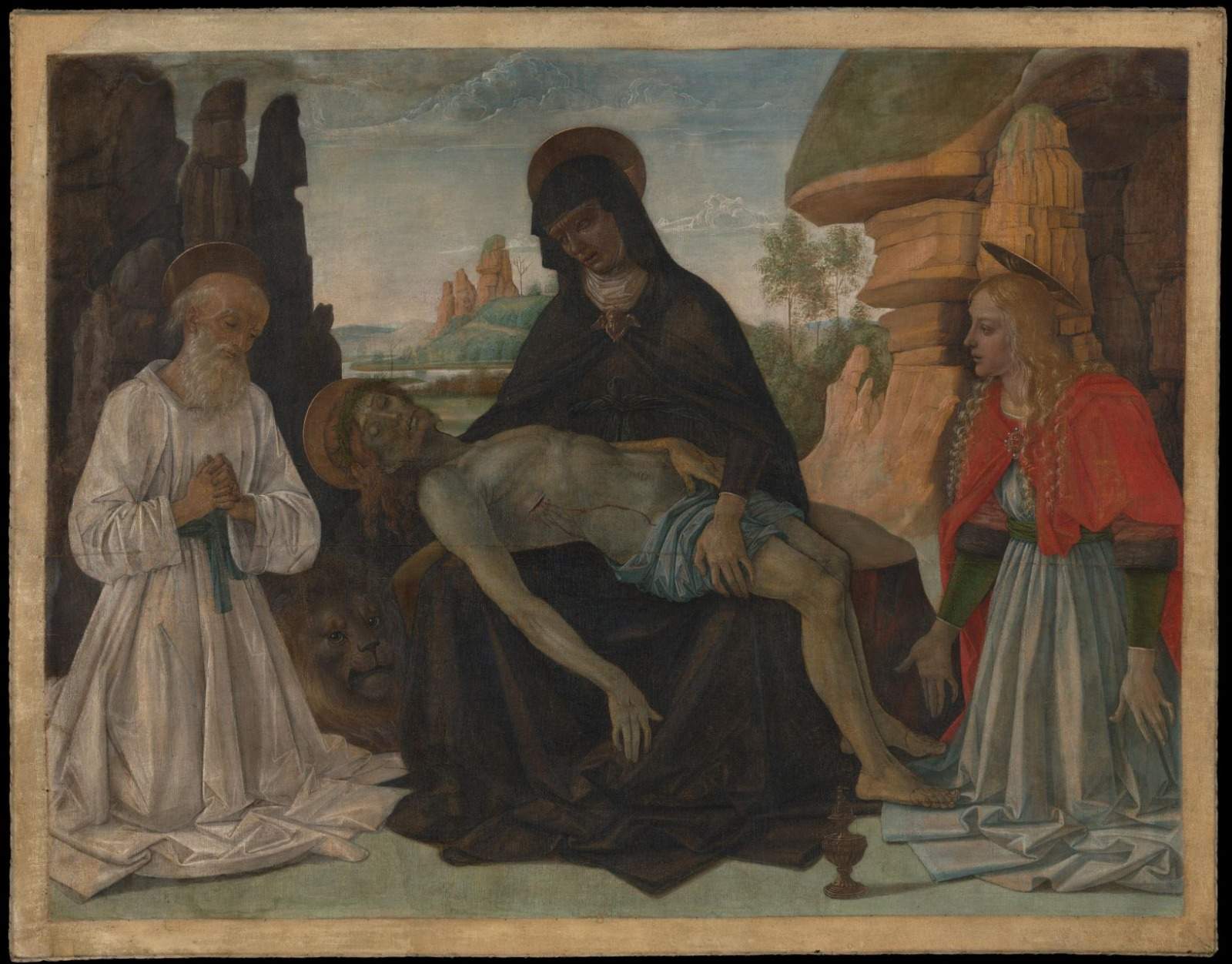Important restoration for the Gonfalone del Farneto, an early work by Pietro Vannucci better known as Il Perugino (Città della Pieve, c. 1450 - Fontignano, 1523) preserved at the National Gallery of Umbria. The restoration is promoted by the Gallery and made possible thanks to funding from Coop Centro Italia and the commitment of Fondazione NOI Legacoop Toscana as part of a larger cultural project aimed at enhancing the exhibition Il meglio maestro d’Italia. Perugino in his time, the major exhibition for the 500th anniversary of the Umbrian artist’s death scheduled from March 4 to June 11, 2023.
The work, painted in tempera on canvas by the Umbrian artist around 1472, is a processional banner from the Franciscan convent of Santissima Pietà del Farneto in Colombella, near Perugia, and will be part of the exhibition itinerary of the major exhibition scheduled at the National Gallery of Umbria in Perugia.
In the Gonfalone del Farneto, critics agree in recognizing one of the capital proofs of the young Pietro Perugino, who worked on it in the early 1570s, in the aftermath of the fundamental formative period spent in Florence in the workshop of Andrea del Verrocchio, alongside “fellow students” such as Leonardo da Vinci, Sandro Botticelli and Domenico Ghirlandaio. The profound and personal reworking of the teachings learned from the Florentine goldsmith, sculptor and painter is evident in the treatment of volumes and anatomies, in the modulation of the draperies, rendered almost as if they were metal foils, and in the definition of the landscape updated on Flemish models. The painting depicts the Lamentation over the body of Christ, lying in the lap of the Mother and venerated by Saint Jerome and Mary Magdalene. The intimate, crepuscular rendering of the subject invites ascetic meditation, which was meant to remind the Franciscan patrons, withdrawn to a small convent nestled in a forest of farnias (a type of oak), of theexemplum of ancient hermits in the desert. The extreme choice of isolation is emphasized by the figures of the two penitent saints and, last but not least, by the prominence given to the precipitous and arid landscape behind them. The center of the canvas is occupied by a monumental Madonna, according to a compositional scheme that retrieves the iconography of the Vesperbilder, artifacts of northern European origin made of poor materials (wood, stucco, terracotta), which depicted precisely Christ in Pieta.
Simplicity of workmanship also distinguishes the gonfalons, usually executed on canvas because they were intended to be carried in processions. Perugino, who would paint many of them throughout his long career, achieves here results of profound lyricism, reducing even the pictorial material to a minimum and using earthy, milky tones imbued with light.
Present at the meeting where the resytauro was presented were the curators of the exhibition, Marco Pierini and Veruska Picchiarelli, director and conservator respectively of the National Gallery of Umbria, Antonio Bomarsi, president of the Board of Directors of Coop Centro Italia, and Irene Mangani, president of the NOI Legacoop Toscana Foundation.
“Contributing concretely to the restoration of this splendid work and, more generally, to such an important event is for us an honor and a source of great pride,” said Antonio Bomarsi, chairman of the Board of Directors of Coop Centro Italia. “It may seem strange to most that a cooperative that operates in the distribution of food and non-food consumer products decided to take part in a restoration project. We did so because we are aware of the importance that the same can represent for the Region of Umbria. As Coop Centro Italia we firmly believe that investing in culture means investing in the territory and in the future of the territory itself. Culture unites us, it is an instrument of social cohesion, but at the same time it is also a bridge to what does not belong to us and what we do not know, because it allows us to understand it better. Investing in culture for us at Coop therefore means participating directly in the sociocultural growth of our territory, and we are delighted that thanks to our contribution one of Perugino’s earliest works will be able to return to its former glory and be admired, even after the Perugino exhibition is over, at this splendid museum. Among the goals of the NOI Legacoop Toscana Foundation is to facilitate access to culture, especially among young people. This is why we are happy to participate in the promotion of such an important project as the splendid exhibition that will celebrate the 500th anniversary of Perugino. We hope that a large number of young people and members of Legacoop member cooperatives will want to participate in this event.”
“When we talk about a widespread museum,” said Marco Pierini, director of the National Gallery of Umbria, “we always think of the works: in reality, spreading a museum passes above all through the sensitivity of people who recognize in culture an identity and socially fundamental value. Heritage, the Faro Convention teaches, is of and for the community: actions like the one we are presenting is confirmation that the work we are doing in conveying a three hundred and sixty degree idea of art is going in the right direction. Initiatives such as this one serve to cover aspects of our daily work, ranging from restoration, through education, to communication and promotion, and are shining examples of how a museum should dialogue and engage.”
Image: Perugino, Gonfalone del Farneto (1472; tempera on canvas, 128 x 165 cm; Perugia, National Gallery of Umbria)
 |
| Perugia, the Gonfalone del Farneto, an important early work by Perugino, goes for restoration |
Warning: the translation into English of the original Italian article was created using automatic tools. We undertake to review all articles, but we do not guarantee the total absence of inaccuracies in the translation due to the program. You can find the original by clicking on the ITA button. If you find any mistake,please contact us.